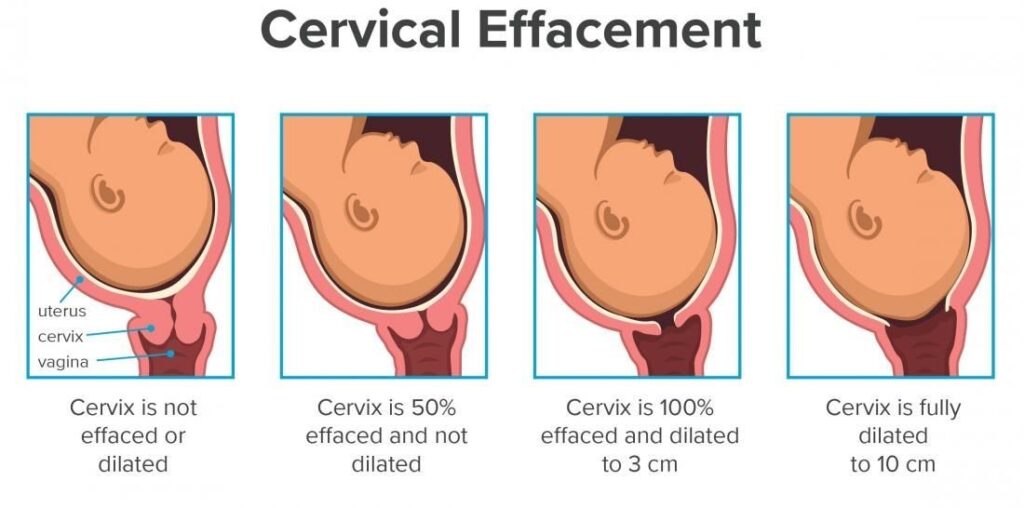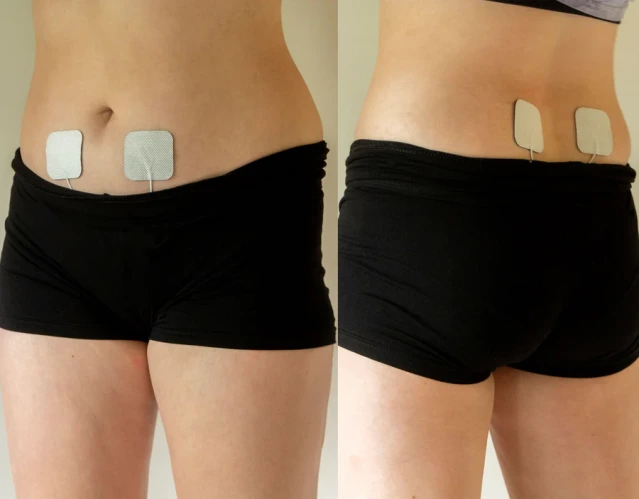As gestation progresses, the body of the mother undergoes various changes to prepare for childbirth. These changes include the softening of the cervix, the thinning of the uterus walls, and the gradual descent of the baby’s head into the pelvis which helps facilitate the labour and delivery process. However, the process of labour and delivery can vary widely between individuals. Some women may have relatively short and uncomplicated labour, while others may experience longer or more difficult labour (Dystocia).
Although labour takes an average amount of time, it’s crucial to understand that it can vary greatly from person to person and can be affected by different factors such as the baby’s position and size, the mother’s overall health and fitness, and the presence of any medical conditions or complications. The mother’s journey through labour is marked by three distinct stages, each with its challenges and rewards. For a comprehensive explanation of the three stages (previous blog – Stages and factors which affect labour pain).
CERVICAL DILATION & EFFACEMENT: What’s the difference?
Cervical dilation refers to the opening of the cervix, while effacement refers to the thinning and shortening of the cervix. The cervix must dilate and efface during the initial stage of labour in order for the baby to pass through the birth canal. As the cervix dilates, it also begins to efface. This is because the cervix is made up of muscle fibers, and as the muscle fibers stretch to allow the baby to pass through, they also thin out.
At this point, the mother is considered to be fully dilated (10 centimeters) as well as effaced and ready to begin the pushing stage of labour. Therefore, cervical dilation is considered an important indicator of a mother’s readiness to deliver her baby.

HORMONES DURING LABOUR: Holistic Health!
To explore how ELLE TENS can help alleviate labour pain, it’s important to understand the role of hormones during delivery. The mother’s body will experience the activation of four major hormonal systems during labour and delivery. These hormonal systems include:
- Oxytocin – “The love hormone”
- Endorphins – “The hormones of pleasure and enlightenment”
- Adrenaline –“The hormone of excitement”
- Prolactin – “The nurturing hormone”
OXYTOCIN:
Oxytocin, a hormone often referred to as the “love hormone,” plays a crucial role in childbirth and is closely linked to feelings of bonding and motherhood. In situations where labour needs to be induced, oxytocin or a synthetic form of it is commonly used to initiate the process. As labour begins, oxytocin levels rise, resulting in rhythmic contractions of the uterus and abdominal muscles. Oxytocin, in conjunction with high levels of estrogen, triggers the release of prostaglandins, a group of hormones that may aid in softening the cervix. Rapid increases in relaxin levels during labour help lengthens and soften the cervix, as well as relax and expand the mother’s lower pelvic region, making it easier for the baby to arrive.
ENDORPHINS:
Endorphins, which are also known as the “feel-good” hormones, play a crucial role in labour as well. These hormones are released by the body during labour and work to decrease the mother’s perception of pain, allowing her to better cope with the intensity of contractions. Endorphins have been shown to have pain-relieving effects similar to morphine but without negative side effects. Additionally, endorphins can help the mother feel a sense of euphoria and exhilaration during and after birth, creating a positive association with the experience.
ADRENALINE:
Adrenaline, also known as epinephrine, is one of the hormones that is released during the “fight or flight” response, which is triggered by stress or a perceived threat. In the context of labour, adrenaline is released in response to pain and stress, and it helps to increase the mother’s energy and focus, as well as prepare the infant for the journey through the birth canal.
PROLACTIN:
Prolactin is another hormone that plays a role in labour and childbirth. Prolactin is responsible for lactation, or the production of breast milk, after birth. During pregnancy, prolactin levels gradually increase and reach their peak during labour and delivery. Prolactin stimulates milk production, which is important for nourishing the baby after birth. In addition, prolactin may also have a calming effect on the mother, helping to reduce stress and promote relaxation during labour.
Elle Tens During Labour: Why ELLE TENS, Not Epidural….?
Research has shown that epidurals can decrease the release of oxytocin, which can potentially lead to longer labour and an increased need for interventions such as Pitocin, a synthetic form of oxytocin, to help move labour along. It can also likely lead to increased pain and a lower sense of satisfaction with the birth experience by limiting the release of endorphins. Additionally, the use of epidural anaesthesia can affect the release of other hormones such as adrenaline and cortisol, which can have effects on the mother and the baby.
ELLE TENS (Transcutaneous Electrical Nerve Stimulation) is a non-invasive method of pain relief that involves the use of a small, battery-operated device that delivers electrical impulses to the nerves through electrodes placed on the skin. The electrical impulses are thought to stimulate the release of endorphins, which are natural painkillers produced by the body. These endorphins can help to reduce the perception of pain and promote feelings of relaxation and calmness in the mother, potentially leading to a smoother and faster labour experience.
“Embrace the journey of childbirth using ELLE TENS”





